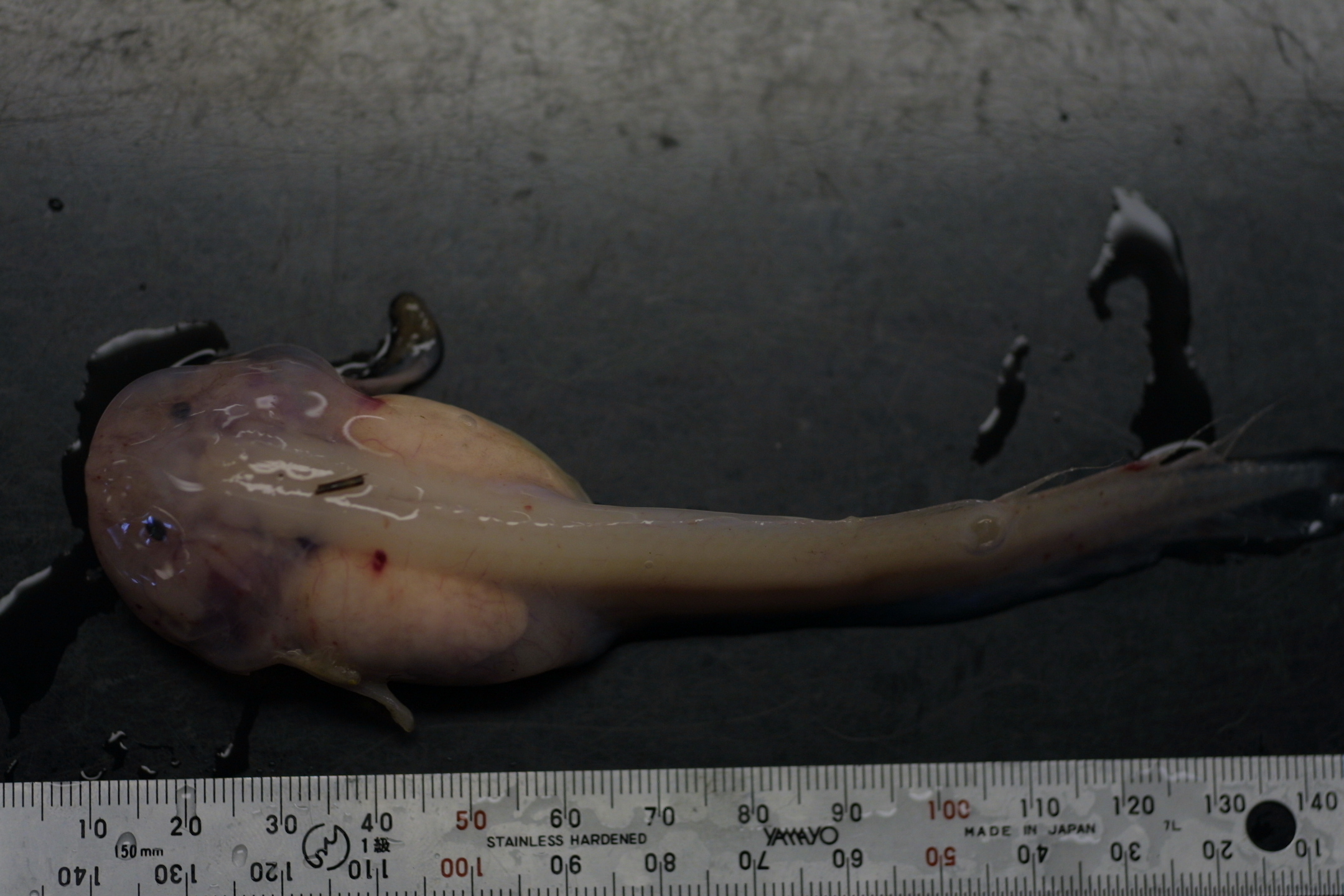A shoal of the deepest-living fish has been captured on film in the Pacific Ocean using high-definition cameras. At 7,703 metres deep Pseudoliparis amblystomopsis, a type of Snailfish, was observed scouring and devouring bait on the ocean floor.
The filming took place at the Japan Trench in the Pacific by a UK-Japan collaboration. Oceanlab, at the University of Aberdeen and the Ocean Research Institute at the University of Tokyo, pooled their resources to form the HADEEP project, which started back in 2007.
Measuring 30cm long, with transparent skin, Monty Priede described them as “surprisingly cute” in comparison to Abyssobrotula galatheae, pulled from an 8km trench off the coast of Puerto Rico, with its fearsome jaws and solitary lifestyle.
Professor Priede, director of Oceanlab said: “It’s incredible. These videos vastly exceed all our expectations from this research. We thought the deepest fishes would be motionless, solitary, fragile individuals eking out an existence in a food-sparse environment. But these fish aren’t loners. The images show groups that are sociable and active—possibly even families—feeding on little shrimp, yet living in one of the most extreme environments on Earth.”
The fish use vibration receptors located on their snouts to detect movement from possible prey, such as shrimp that scavenge on dead fish carcasses that sink to the floor.
Their active behaviour is a surprising characteristic for fish found so deep. Most are relatively inactive and prefer to conserve energy.
Project leader Dr Alan Jamieson, from the University of Aberdeen said: “It was an honour to see these fish,” said. “No-one has ever seen fish alive at these depths before – you just never know what you are going to see when you get down there.” The location of the trench was within the Hadal zone found in the Pacific rim, a patch of ocean found 6–11km deep, with the pressure said to be “equivalent to 1,600 elephants on the roof of a mini”.
The remote-controlled HADEEP submersible, launched from the Japanese research ship, the Hakuho-Maru contains advanced deep-sea equipment built to withstand enormous pressure by the Oceanlab team. The latest cruise was organised by Dr Asako K. Matsumoto, HADEEP research manager. It takes the robot five hours to reach the trenches where it stays for two days before a signal is sent for them to return.
Now that these fish have been discovered, the next move will be to study them. Priede said: “There is the question of how do animals live at all at these kinds of depths. There are three problems: the first is food supply, which is very remote and has to come from 8km above. There is very high pressure – they have to have all sorts of physiological modifications, mainly at the molecular level. And the third problem is that these deep trenches are in effect small islands in the wide abyss and there is a question of whether these trenches are big enough to support thriving endemic populations.” The next expedition will begin in March 2009, with exploration hoping to reach depths of 6–9km.
Deepest Surviving Fish Filmed
A shoal of the deepest-living fish has been captured on film in the Pacific Ocean using high-definition cameras.

By Mickey Lam
10/20/2008
Updated: 10/1/2015






Friends Read Free